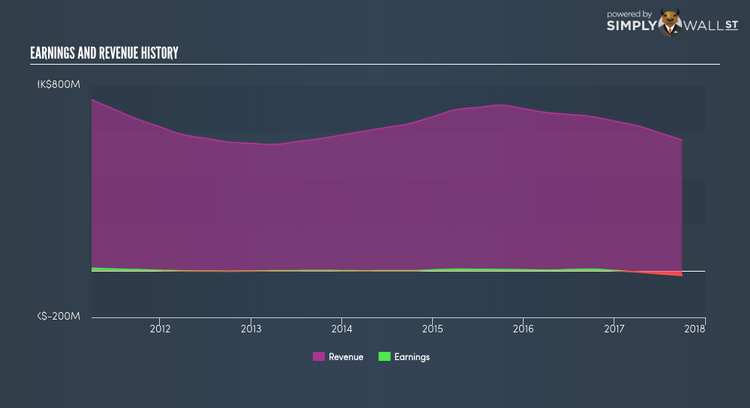Mobicon Group Limited (HKG:1213): What Does It Mean For Your Portfolio?

If you are looking to invest in Mobicon Group Limited’s (SEHK:1213), or currently own the stock, then you need to understand its beta in order to understand how it can affect the risk of your portfolio. 1213 is exposed to market-wide risk, which arises from investing in the stock market. This risk reflects changes in economic and political factors that affects all stocks, and is measured by its beta. Different characteristics of a stock expose it to various levels of market risk, and the market as a whole represents a beta of one. A stock with a beta greater than one is considered more sensitive to market-wide shocks compared to a stock that trades below the value of one.
See our latest analysis for Mobicon Group
What is 1213’s market risk?
Mobicon Group’s beta of 0.96 indicates that the company is less volatile relative to the diversified market portfolio. This means that the change in 1213’s value, whether it goes up or down, will be of a smaller degree than the change in value of the entire stock market index. 1213’s beta implies it may be a stock that investors with high-beta portfolios might find relevant if they wanted to reduce their exposure to market risk, especially during times of downturns.
How does 1213’s size and industry impact its risk?
A market capitalisation of HK$310.00M puts 1213 in the category of small-cap stocks, which tends to possess higher beta than larger companies. In addition to size, 1213 also operates in the electronic industry, which has commonly demonstrated strong reactions to market-wide shocks. As a result, we should expect a high beta for the small-cap 1213 but a low beta for the electronic industry. It seems as though there is an inconsistency in risks portrayed by 1213’s size and industry relative to its actual beta value. A potential driver of this variance can be a fundamental factor, which we will take a look at next.
How 1213’s assets could affect its beta
An asset-heavy company tends to have a higher beta because the risk associated with running fixed assets during a downturn is highly expensive. I examine 1213’s ratio of fixed assets to total assets to see whether the company is highly exposed to the risk of this type of constraint. With a fixed-assets-to-total-assets ratio of greater than 30%, 1213 appears to be a company that invests a large amount of capital in assets that are hard to scale down on short-notice. As a result, this aspect of 1213 indicates a higher beta than a similar size company with a lower portion of fixed assets on their balance sheet. However, this is the opposite to what 1213’s actual beta value suggests, which is lower stock volatility relative to the market.
What this means for you:
1213 may be a worthwhile stock to hold onto in order to cushion the impact of a downturn. Depending on the composition of your portfolio, low-beta stocks such as 1213 is valuable to lower your risk of market exposure, in particular, during times of economic decline. What I have not mentioned in my article here are important company-specific fundamentals such as Mobicon Group’s financial health and performance track record. I urge you to complete your research by taking a look at the following:
Financial Health: Is 1213’s operations financially sustainable? Balance sheets can be hard to analyze, which is why we’ve done it for you. Check out our financial health checks here.
Past Track Record: Has 1213 been consistently performing well irrespective of the ups and downs in the market? Go into more detail in the past performance analysis and take a look at the free visual representations of 1213’s historicals for more clarity.
Other High-Performing Stocks: Are there other stocks that provide better prospects with proven track records? Explore our free list of these great stocks here.
To help readers see pass the short term volatility of the financial market, we aim to bring you a long-term focused research analysis purely driven by fundamental data. Note that our analysis does not factor in the latest price sensitive company announcements.
The author is an independent contributor and at the time of publication had no position in the stocks mentioned.

